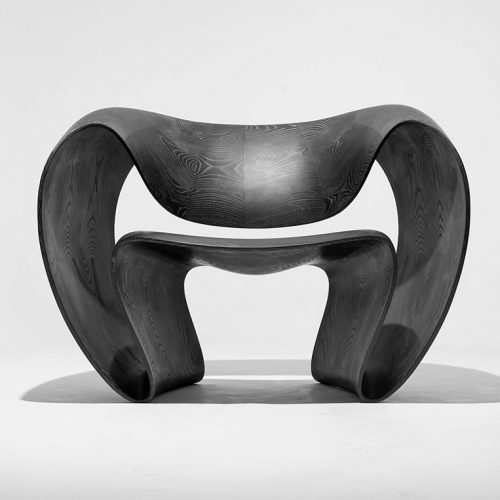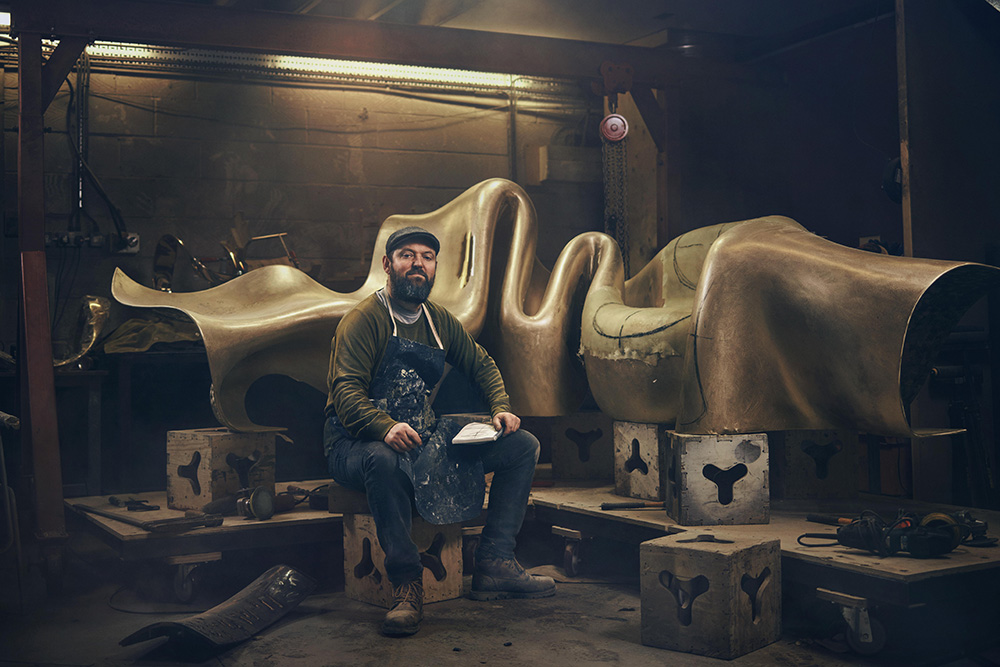
Tom Vaughan of Object Studio
Tom is founder of Object Studio – a workshop for making, a laboratory for experimentation, and the meeting point of traditional craft with modern processes. We are mesmerised by the way he manipulates timber and metals into sculptural organic forms, such as the ebonised ash Scarpa Desk, the Ripple table of American black walnut and the bronze Cone table with wenge top.
The S Chair was one of his earliest designs, an exploration into flow inspired by the movement of the paintbrush, with the chair’s profile arising directly from the two-dimensional lines of calligraphy into a functional, three-dimensional form. This piece demonstrates the inspiration he takes from artists such as Barbara Hepworth and Henry Moore. Similarly, the privately commissioned Scarpa Desk is heavily influenced by the designs of architect Carlos Scarpa, and is a companion to his own, highly sculptural Ribbon chair.
Exclusive works for sale
An artist-maker who trained in Cabinet Making at London Guildhall University and in Three-dimensional Design at Brighton University, Tom took a Masters in Contemporary Product Design at the Royal College of Art under the tutelage of Ron Arad (he himself is now a visiting lecturer at the RCA). He is a QEST Scholar, who used the experience to investigate the casting of metals and associated crafts such as welding, chasing, figuring and patinating. This resulted, among other things, in a reworking of his Goldsmiths Chair, originally commissioned by The Worshipful Company of Goldsmiths and made in black ash as a foil to exquisite British silverware. As Object Studio, he and his team of specialist craftspeople take on ambitious commissions for galleries, public institutions and private clients, including the fabrication of complex three-dimensional structures in woods, metals and synthetics.
Of his passion for what he does, he says, “My furniture pieces, however sculptural, are functional objects that are made to be used and enjoyed – beautiful to the eye and pleasing to the touch. Behind the organic forms is the constant development of my fabricating processes, which is a convergence of traditional crafts combined with modern cutting-edge digital design and production techniques. I aim to produce quality pieces that will last many lifetimes, growing in character as they are used over time.”
Photographs by Sam Barker

















